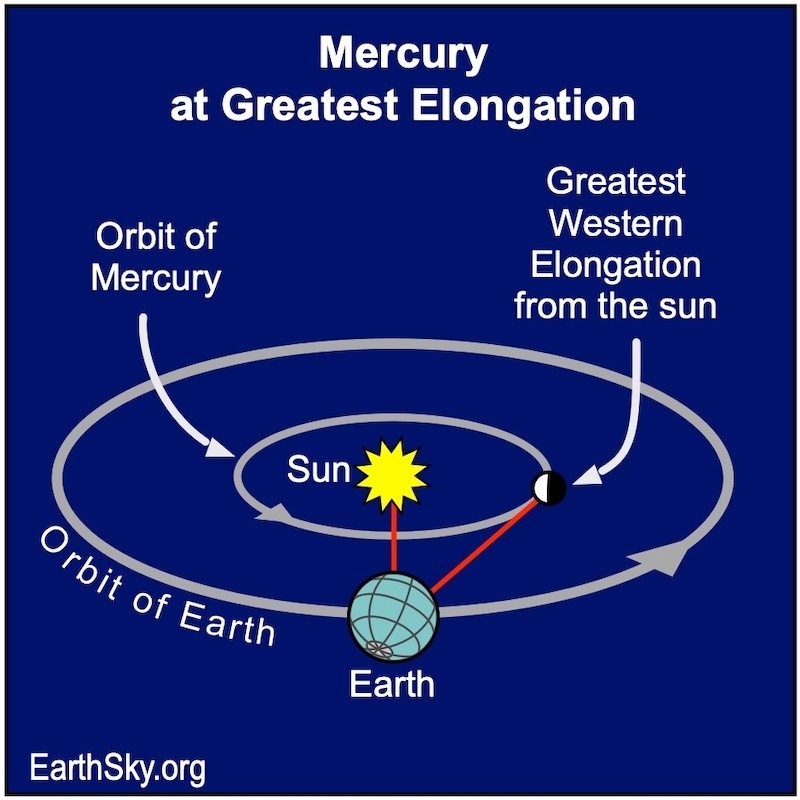
Mercury will reach greatest elongation – its greatest distance from the sun in the morning sky – on May 9, 2024. At that time, it’s 26 degrees from the sunrise.
The innermost planet Mercury orbits the sun every 88 days. And Earth is moving, too. So Mercury goes between us and the sun pretty often, about every 116 days. Indeed, it did this last on April 11, 2024, reaching the point astronomers call inferior conjunction. Since then, Mercury has been speeding ahead of Earth in orbit. It re-emerged in our dawn sky late last month. Now, Mercury will reach its greatest morning elongation – its greatest apparent distance from the rising sun – on May 9, 2024.
Also, due to the angle of the ecliptic – path of the sun, moon and planets – this time of the year, this May 2024 Mercury elongation is better viewed from the Southern Hemisphere because the planet will reach a higher altitude on the sky dome. In fact, this will be the best morning apparition for the Southern Hemisphere. But northern skywatchers can see it, too!
In the meantime, the innermost planet – named for the fleet-footed messenger god of the ancient Romans – will be visible for a few more weeks.
Mercury greatest elongation, May 2024
When to watch: Officially, Mercury will became visible toward the end of April 2024 in the morning sky. However, it will be tough to see until it climbs higher in the sky. At greatest elongation – May 9, 2024 – Mercury is farthest from the sunrise on our sky’s dome. And after that, when it’ll be edging back toward the sunrise, it’ll brighten a little bit more, making Mercury easier to spot – although low – in the morning twilight.
Where to look: Look in the sunrise direction, as the sky is getting lighter. Mercury, Mars and Saturn are all lined up before the sunrise.
Greatest elongation is on May 9 at 9:00 UTC (4:00 a.m. CDT). Mercury is shining at a 0.6 magnitude that morning. And it is 26 degrees from the sun.
Through a telescope on and around May 9, Mercury appears 41% illuminated, in a crescent phase, and 8.1 arcseconds across.
Note: Once you spot it, notice that Mercury brightens quickly as May progresses, reaching a magnitude of around -0.7 (bright, but in bright morning twilight) before slipping away in the morning glare before the end of the month.
Finder chart, Northern Hemisphere
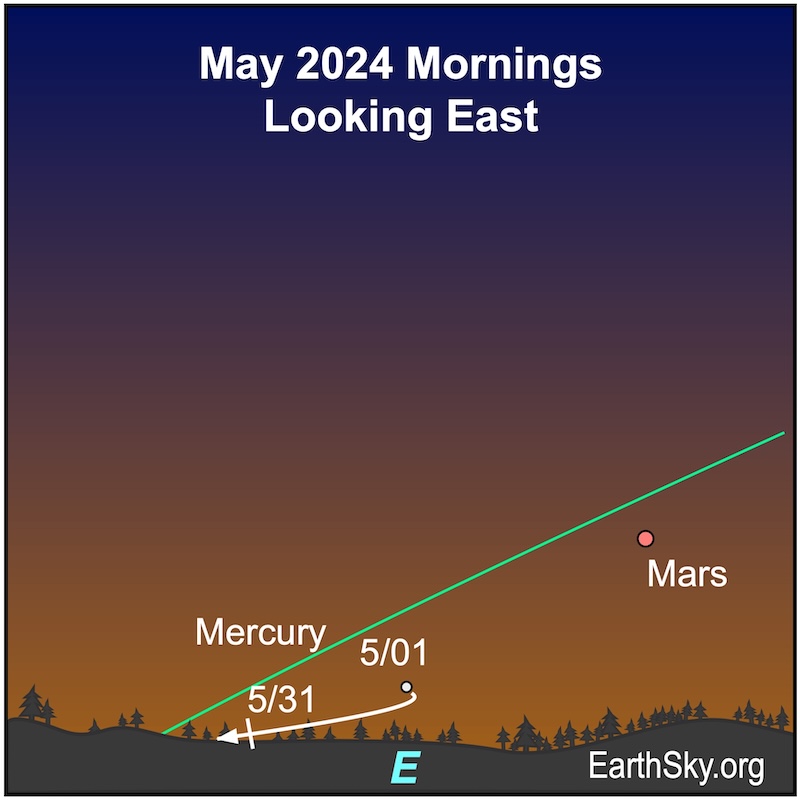
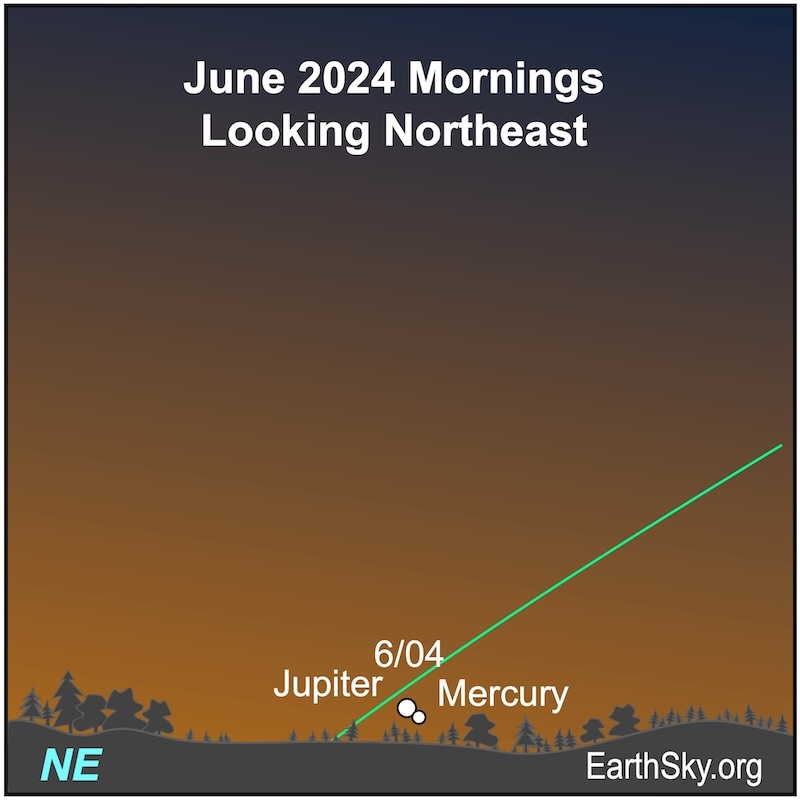
Finder charts, Southern Hemisphere
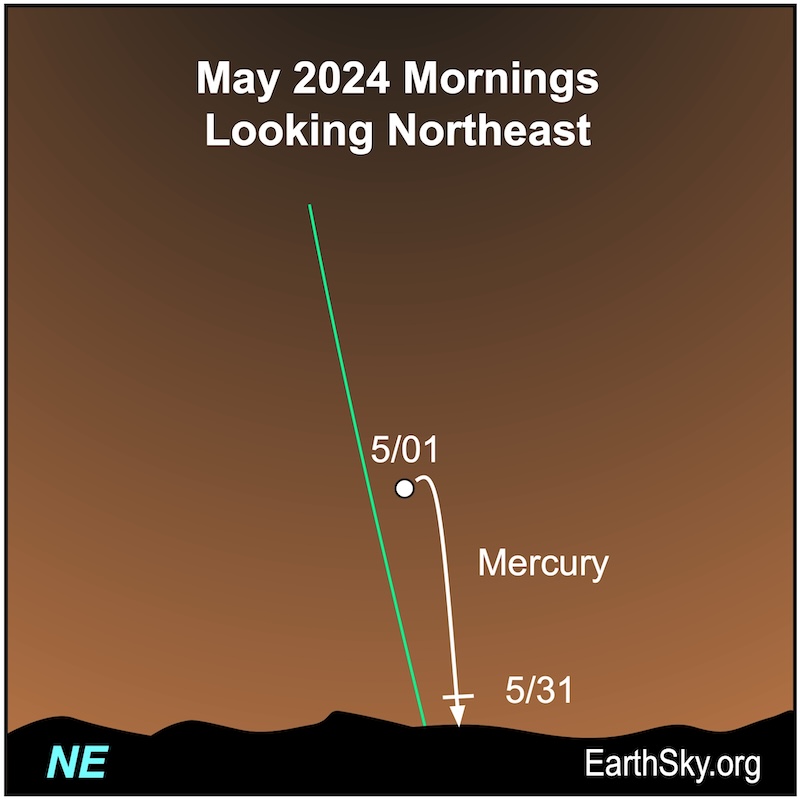
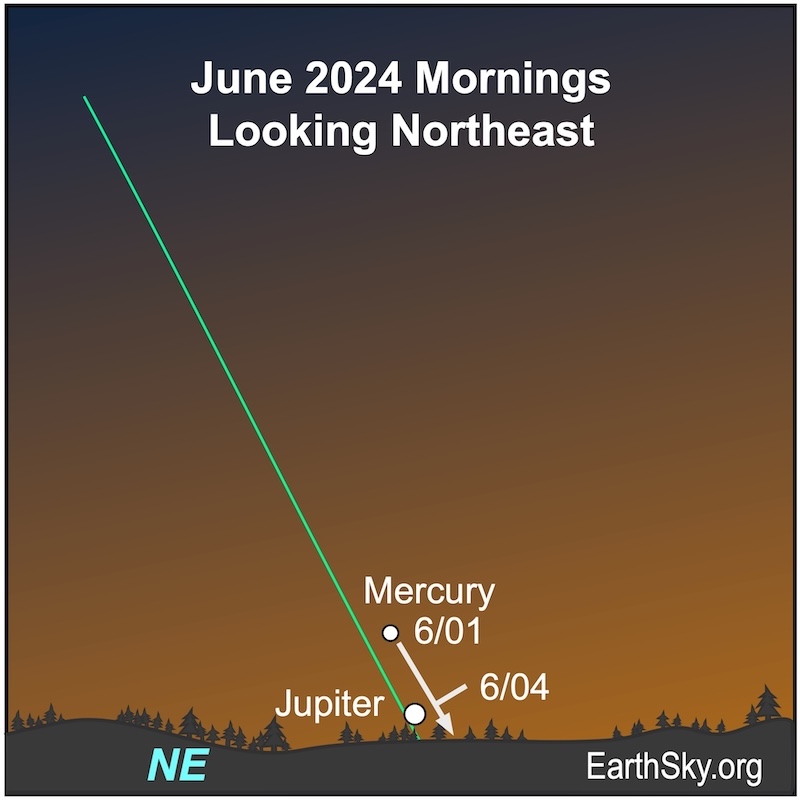
For precise sun and Mercury rising times at your location:
Old Farmer’s Almanac (U.S. and Canada)
timeanddate.com (worldwide)
Stellarium (online planetarium program)
Mercury events in 2024
Note: Dates are listed based on UTC times
Jan 12, 2024: Greatest elongation (morning)
Feb 28, 2024: Superior conjunction (passes behind sun from Earth)
Mar 24, 2024: Greatest elongation (evening)
Apr 11, 2024: Inferior conjunction (races between Earth and sun)
May 9, 2024: Greatest elongation (morning)
Jun 14, 2024: Superior conjunction (passes behind sun from Earth)
Jul 22, 2024: Greatest elongation (evening)
Aug 19, 2024: Inferior conjunction (races between Earth and sun)
Sep 5, 2024: Greatest elongation (morning)
Sep 30, 2024: Superior conjunction (passes behind sun from Earth)
Nov 16, 2024: Greatest elongation (evening)
Dec 5, 2024: Inferior conjunction (races between Earth and sun)
Dec 25, 2024: Greatest elongation (morning)
Mercury charts from Guy Ottewell
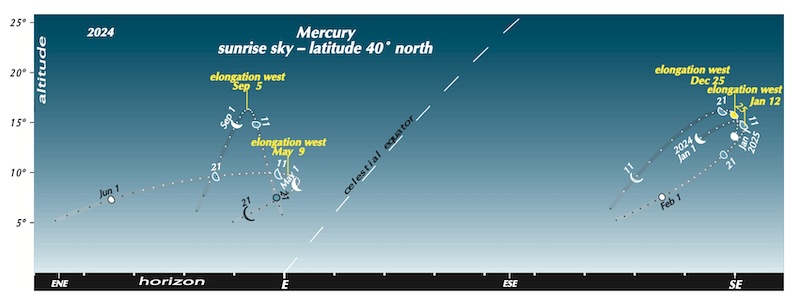

A comparison of elongations
Mercury’s greatest elongations are not equal. Indeed, some are “greater” than others. For example, the distance of Mercury from the sun on our sky’s dome varies from about 28 degrees (maximum) to 18 degrees (minimum).
Also, Mercury elongations are better or worse depending on the time of the year they occur and your location on Earth. So, for both hemispheres, spring evenings and autumn mornings are best.
As an illustration, the chart below – from a Northern Hemisphere perspective – might help you visualize these differences.
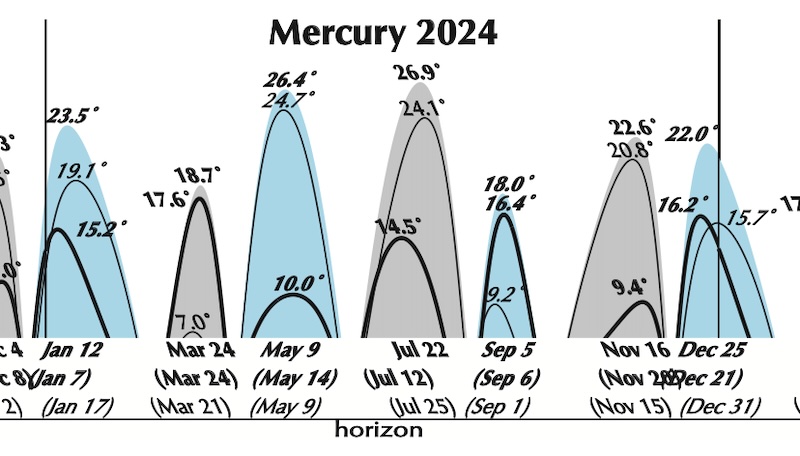
Heliocentric solar system, May 2024
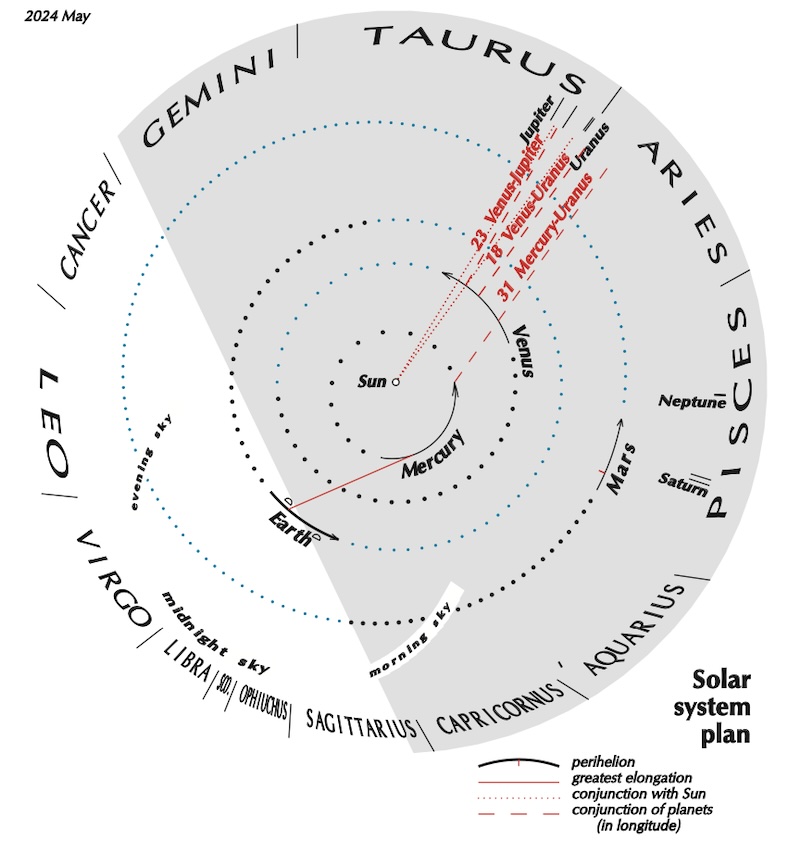
Seasons make a difference
So, in the autumn for either hemisphere, the ecliptic – or path of the sun, moon and planets – makes a narrow angle to the horizon in the evening. Conversely, it makes a steep slant, nearly perpendicular, in the morning. So – in autumn from either hemisphere – morning elongations of Mercury are best. Then, Mercury appears higher above the horizon and farther from the glow of the sun. Conversely, evening elongations in autumn are, however, harder to see.
On the other hand, in the spring for either hemisphere, the situation reverses. Then, the ecliptic and the horizon meet at a sharper angle on spring evenings and at a narrower angle on spring mornings. So, in springtime for either hemisphere, evening elongations of Mercury are best. Meanwhile, morning elongations in springtime are harder to see.
Bottom line: Mercury reaches its greatest elongation – greatest distance from the sunrise – on May 9, 2024. Look east at dawn. It’ll brighten through most of May before disappearing from the morning sky before the end of the month.











